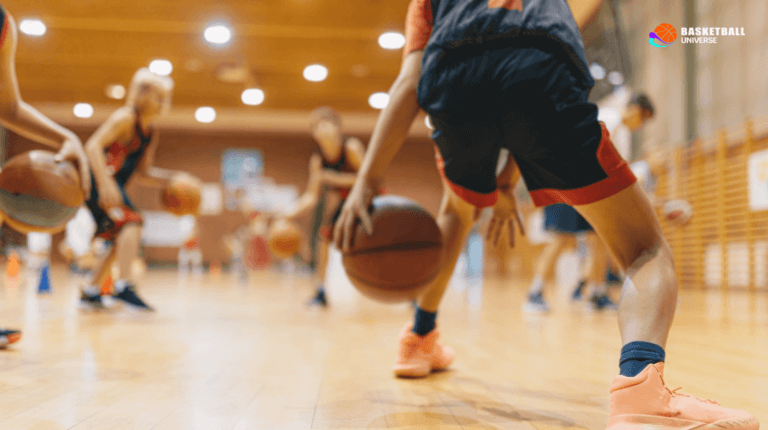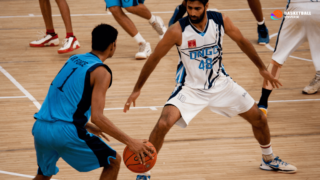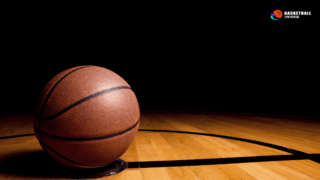
Grab your court kicks and lace up, because today we’re exploring the often-asked question: Can you run in basketball shoes? For our hoop dreams enthusiasts and pavement-pounders alike, this topic is worth sinking our teeth into. With the ever-evolving footwear landscape, it’s no wonder that people are curious about whether their beloved basketball sneakers can double as running gear. We know you want the lowdown on this fascinating crossover, and we’re here to give you a slam dunk of an answer – so let’s dive in and get the ball rolling!
Can You Run in Basketball Shoes?
Yes, you can run in basketball shoes, but it is not recommended for long distances or regular training. Basketball shoes are designed to provide support, cushioning, and stability for lateral movements specific to basketball. While they can be used for short distance running, they lack the lightweight construction and flexibility needed for optimal running performance. Therefore, it’s best to use specific running shoes for your runs to prevent injuries and ensure maximum comfort and efficiency.
The Anatomy of Basketball Shoes
Basketball shoes are specially designed to withstand the rigors of the game, taking into account the unique movements and actions that take place on the court. To better understand what makes basketball shoes different from running shoes, let’s break down the anatomy of a typical pair.
Upper Material and Fit
The upper part of basketball shoes is usually made from a combination of materials such as leather, synthetic materials, and textile or mesh. These materials are chosen for their durability, support, and breathability. Basketball shoes generally have a higher cut, which provides excellent ankle support to help prevent injuries while playing the game. Furthermore, they often incorporate features such as a padded collar and tongue, ensuring a snug and comfortable fit.
Midsole Cushioning and Support
The midsole of basketball shoes is the key component for providing cushioning and support. These midsoles are usually thicker and more rigid than those found in running shoes. This is to ensure maximum impact protection for the foot during the high jumps, sudden stops, and sharp changes in direction that are common in basketball. The cushioning systems used in basketball shoes can vary, but they are generally made from foam, gel, or air-based components.
Outsole and Traction
The outsoles in basketball shoes are made from durable rubber compounds that provide excellent grip on the court. They feature traction patterns with multidirectional grooves to accommodate the rapid adjustments in foot positioning, sudden stops, and lateral movements that are integral aspects of the game. Some high-performance basketball shoes may also include a herringbone pattern or other specialized designs for enhanced traction.
What Makes Running Shoes Different?
Running shoes, on the other hand, are specifically designed to support the natural biomechanics of running. These shoes are generally more lightweight and flexible than basketball shoes to facilitate natural foot movements and ensure a smooth ride. Below are several key aspects of running shoes that set them apart.
Upper Material and Fit
Running shoes typically have an upper constructed of lightweight, breathable materials such as mesh, synthetic materials, or knit fabric. The goal is to provide comfort, breathability, and flexibility, while minimizing weight to reduce fatigue and enhance performance. Unlike basketball shoes, running shoes often have a low or moderate cut, which ensures maximum freedom of movement at the ankle joint.
Midsole Cushioning and Support
The midsole in running shoes typically features specialized cushioning technologies that are more lightweight and responsive than those found in basketball shoes. These cushioning systems are designed to absorb shock and protect the joints, while also providing energy return to propel the runner forward. Additionally, running shoes may incorporate features such as stability or motion control elements to address specific biomechanical needs.
Outsole and Traction
The outsoles of running shoes are crafted from lightweight and durable rubber materials that offer traction on a variety of surfaces. They typically have a more simplistic, linear pattern designed to provide stable traction during forward motion. Flex grooves are also incorporated for increased flexibility and a natural foot roll, which is essential for a smooth and efficient running gait.
Why Basketball Shoes Are Not Ideal for Running
Now that we’ve addressed the differences between basketball and running shoes, it’s essential to understand why using basketball shoes for running may not be the best choice. There are several key reasons why it’s not ideal to wear basketball shoes while running:
Weight and Flexibility
Basketball shoes are generally heavier and more rigid than their running counterparts. The extra weight and lack of flexibility can hinder your natural running stride and may lead to reduced efficiency and increased fatigue. A lightweight, flexible running shoe allows for a smoother and more effortless gait.
Cushioning and Support
As mentioned earlier, basketball shoes are designed with thicker, more rigid cushioning systems that provide support and protection for the specific demands of the game. While this may be suitable for basketball, it may not necessarily translate well to running. Running shoes have specialized cushioning systems that effectively absorb impact and distribute force across the foot, resulting in a more comfortable and efficient running experience.
Ground Contact and Traction
Basketball shoes have outsoles that are designed to provide multidirectional grip on the court’s surface. In contrast, running shoes have outsoles designed specifically for forward motion. The different traction patterns and flex grooves in running shoes can actually provide a more reliable and stable grip on a variety of terrain, ensuring a safer and more enjoyable run.
When Is It Okay to Run in Basketball Shoes?
Despite the differences outlined above, there are still some instances when you may opt to use basketball shoes for running:
Short Distances and Occasional Runs
While basketball shoes are not ideal for long distances or regular running, you can still use them for short distances or occasional casual runs without causing significant issues. If you’re in a pinch and your basketball shoes are the only sneakers available, you can use them for a quick jog around the block.
Cross-Training Activities
If you engage in a variety of sports or workouts that may involve some running, basketball shoes can serve as a suitable option. They provide ample support and stability for a mix of activities like circuit training or gym workouts that include some running.
How to Choose the Right Footwear for You
When selecting footwear for both basketball and running, the key takeaway is to choose shoes that are specifically designed for the activity. Here are some tips to help you choose the right shoes for running and playing basketball:
Running Shoes
- Opt for lightweight and breathable uppers to enhance comfort and minimize fatigue.
- Choose a shoe with adequate cushioning and support to absorb shock and protect your joints.
- Consider your foot type and gait when selecting shoes, as certain models are designed specifically for overpronation, supination, or neutral gait runners.
- Test the shoe’s flexibility by bending it to ensure a smooth transition through the running motion.
Basketball Shoes
- Choose high-quality materials for the shoe’s upper that provide support, durability, and breathability.
- Look for enhanced ankle support if you’re concerned about potential injuries.
- Select shoes with cushioning systems that deliver both impact protection and responsiveness for quick movements.
- Ensure that the outsole provides ample traction for your specific playing surface.
In conclusion, while you can technically run in basketball shoes, they are not ideal for distance running or regular training. To maximize performance, prevent injuries, and maintain comfort, it’s best to invest in separate shoes tailored for basketball and running. By choosing the appropriate footwear for each activity, you’ll be able to enjoy optimal support, cushioning, and stability, allowing you to score a slam dunk both on and off the court.
Alternative Footwear Options: Cross-Training Shoes
If you’re looking for an alternative to basketball shoes that can still provide adequate support for a variety of activities, you may want to consider cross-training shoes. These versatile shoes are designed as a jack-of-all-trades and are suitable for various sports, workout routines, and even short runs.
Why Choose Cross-Training Shoes?
Cross-training shoes combine elements of different athletic shoes, offering a versatile option for people who engage in multiple activities. Here are some reasons why cross-training shoes may be a good fit for you:
- If you participate in various sports or fitness routines, cross-training shoes can save you from purchasing multiple pairs of activity-specific shoes.
- They offer a good balance between cushioning, support, and flexibility, accommodating a wide range of movements.
- These shoes often have outsoles designed for traction on various surfaces, making them suitable for indoor and outdoor activities.
How to Choose Cross-Training Shoes
Selecting the right pair of cross-training shoes involves taking into consideration the specific activities that you enjoy. Keep these tips in mind when shopping for cross-training shoes:
- Consider the primary activities you will be using the shoes for, and look for features tailored to those activities.
- Opt for a shoe with good lateral support, which is essential for sports like basketball or group fitness classes that involve side-to-side movements.
- Choose a shoe with the appropriate level of cushioning for your needs – a balance between shock absorption and responsiveness is ideal.
- Make sure the shoe has a flexible forefoot to allow for a natural foot roll during running or walking.
- Select a shoe with good traction suitable for your preferred training surface.
Maintaining Your Athletic Shoes
Now that you know the importance of choosing the appropriate footwear for basketball, running or cross-training, it’s essential to know how to maintain and care for your shoes to ensure they last longer and perform optimally. Here are some tips to keep your athletic shoes in top shape:
Rotating Your Shoes
Don’t rely on just one pair of shoes for all your activities. Instead, rotate between two or three pairs, giving each shoe time to air out and recover between uses. This can help maintain the cushioning and support of your shoes, ensuring better overall performance.
Cleaning Your Shoes
To keep your shoes looking and smelling fresh, clean them periodically using a soft brush or cloth and mild detergent. Avoid using harsh chemicals or submerging your shoes in water, as these can damage the materials and compromise the shoe’s structure.
Drying Your Shoes
If your shoes become wet, dry them naturally by stuffing them with newspaper or using a shoe dryer. Avoid exposing your shoes to direct heat, such as a radiator or dryer, as it can damage the materials and cause the shoe to lose its shape.
Replacing Your Shoes
Keep an eye on the wear and tear of your athletic shoes, and replace them when they show signs of deterioration. For running shoes, it’s generally recommended to replace them every 300-500 miles. In contrast, basketball or cross-training shoes should be replaced when you notice decreased support, traction or comfort.
Wrapping It Up
When it comes to running in basketball shoes, it’s always best to select the appropriate footwear designed specifically for each activity. While basketball shoes may suffice for short runs or cross-training activities, they lack the necessary features for optimal performance and comfort during running. Investing in running shoes, basketball shoes, or even versatile cross-training shoes will not only enhance your performance but also keep your feet happy and healthy.
FAQs: Frequently Asked Questions about Running in Basketball Shoes
Here’s a collection of frequently asked questions regarding the use of basketball shoes for running, along with short and informative answers, to help guide you in making the best footwear choices for your athletic needs.
1. Can I play basketball in running shoes?
It is not recommended to play basketball in running shoes, as they lack the necessary support, stability, and cushioning required for the specific demands of the game. Basketball shoes are designed to protect your feet and prevent injury while providing ample traction on the court, which running shoes do not offer.
2. How can I tell when my basketball shoes need to be replaced?
Signs that you should replace your basketball shoes include worn-out traction, decreased cushioning and support, damaged upper material, or reduced comfort during play. It’s essential to replace your basketball shoes when they start showing these signs to maintain optimal performance and prevent injuries.
3. Are there any benefits to wearing high-top basketball shoes over low-top models?
High-top basketball shoes provide additional ankle support and stability, which can help reduce the risk of injuries during play. However, some athletes may prefer low-top models for a lighter feel and increased freedom of movement. It ultimately depends on personal preference and individual performance needs.
4. Can I use court shoes for running?
While court shoes are designed primarily for indoor sports like volleyball or squash, they can be used for short-distance running or occasional runs. However, court shoes may not provide the ideal support, cushioning, and flexibility needed for distance running or regular training.
5. How often should I replace my running shoes?
Running shoes should generally be replaced every 300-500 miles to ensure optimal cushioning and support. If you notice any signs of wear or decreased performance before reaching this mileage, consider replacing your shoes earlier.
6. Should I replace my basketball shoes if I use them for running?
If you use basketball shoes for running occasionally or over short distances, they will not require more frequent replacement than if used strictly for playing basketball. However, it’s still essential to monitor their condition and replace them when they show signs of wear or decreased performance.
7. How can I find the right pair of running shoes for my needs?
To choose the right pair of running shoes, consider your foot type, gait, and specific running needs. Look for lightweight and breathable materials, appropriate cushioning and support, and proper flexibility. You can also consult with running shoe specialists or visit a dedicated running store for personalized advice.
8. Can I wear basketball shoes for jogging or walking?
You can wear basketball shoes for jogging or walking over short distances or occasional use without causing significant issues. However, for regular or long-distance walking, consider investing in walking-specific shoes that provide the necessary support, cushioning, and flexibility.
9. How do I clean my athletic shoes?
Clean your athletic shoes using a soft brush or cloth and a mild detergent. Avoid using harsh chemicals or submerging your shoes in water, as these can damage the materials and compromise their structure.
10. Can I dry my basketball shoes or running shoes in the dryer?
It’s not recommended to dry your athletic shoes in the dryer, as direct heat can damage the materials and cause the shoe to lose its shape. Instead, use a shoe dryer or let the shoes air dry naturally by stuffing them with newspaper or placing them in a well-ventilated area.
11. Are minimalist or zero-drop shoes good for basketball or running?
Minimalist or zero-drop shoes can be suitable for some runners, promoting a more natural running motion and strengthening foot muscles. However, these shoes may not provide the necessary cushioning, support, or traction required for basketball. It’s essential to choose shoes designed specifically for your sport or activity.
12. How do I choose the right shoe size for basketball and running?
It’s important to choose shoes that fit snugly but comfortably, leaving enough room in the toe box for natural toe splay during movement. Measure both feet and try on shoes later in the day when feet are at their largest. Don’t forget to wear your usual athletic socks and, if necessary, orthotics while trying on shoes.
13. Can basketball shoe insoles be used for running shoes?
While basketball shoe insoles may provide some additional cushioning
Featured Posts
- No pillar pages found.





